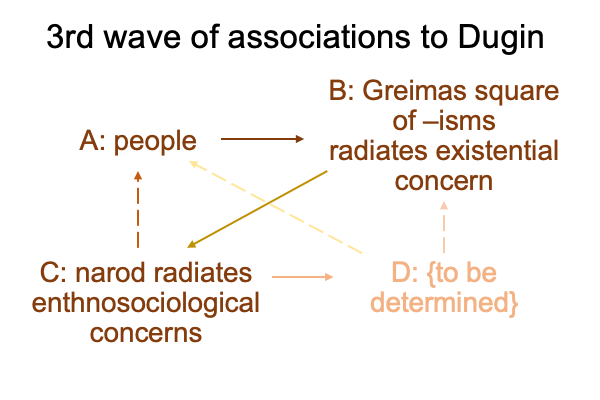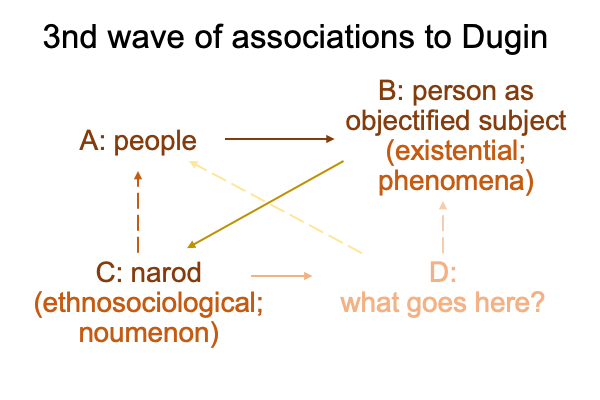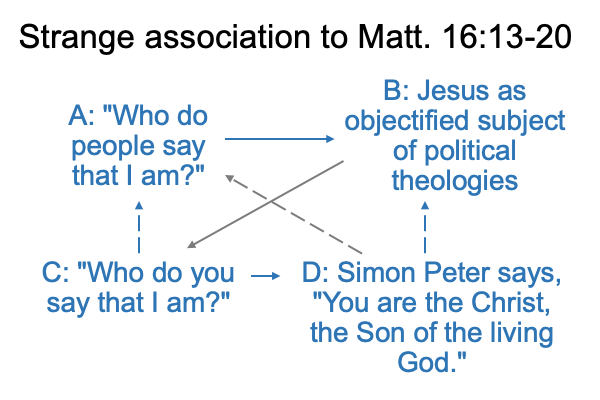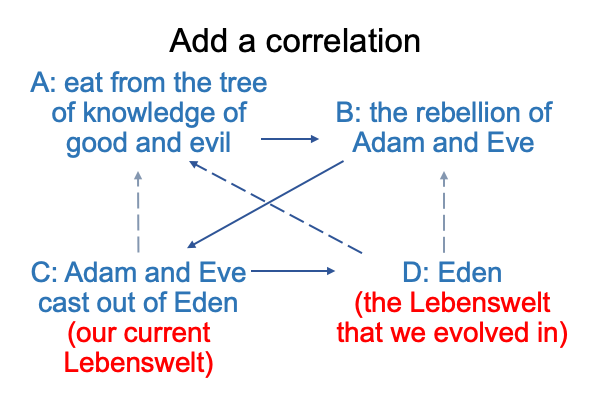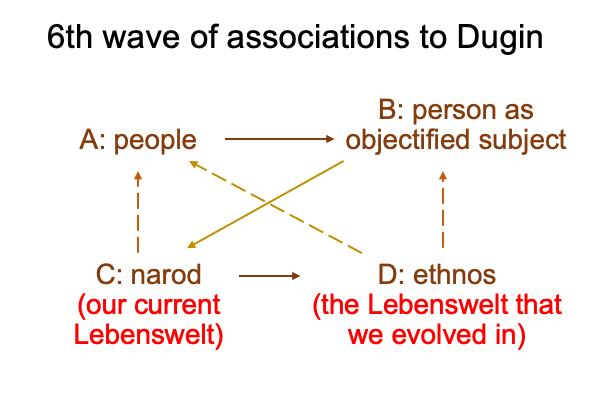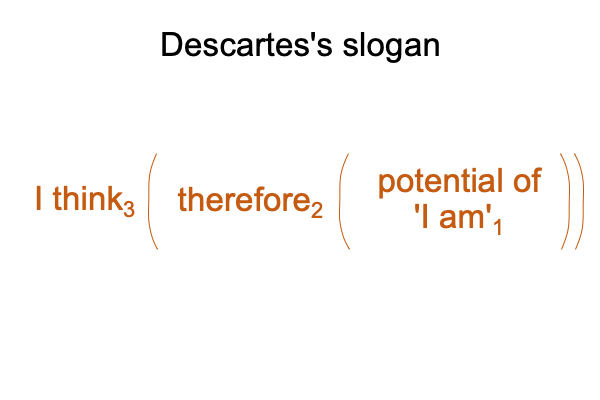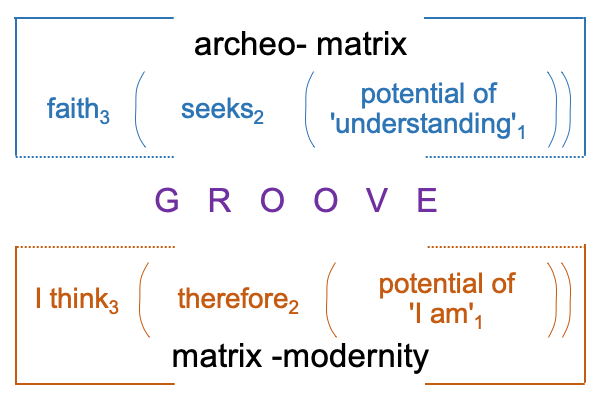Looking at Michael Millerman’s Chapter (2022) “…Dimensions of Dugin’s Populism” (Part 4 of 9)
0019 Dugin offers an entirely new discipline of political philosophy, based on the term, “narod”. He calls this discipline, “ethnosociology”. Ethnosociology is not a science. Indeed, ethnosociology stands as a noumenon in contrast with its phenomena. Phenomena are observable and measurable facets of a noumenon. The distinction between the noumenon and its phenomena is developed in Comments on Jacques Maritain’s Book (1935) Natural Philosophy, by Razie Mah, available at smashwords and other e-book venues.
Ethnosociology (C) contradicts the first three political philosophies of the modern West (B). Ethnosociology (C) complements the people (A), the topic under consideration.
0020 The first three political philosophies of the West (B) objectify phenomena of the narod, that is, the person in community. Liberalism, communism and fascism operate as empirio-schematic judgments, where disciplinary languages bring mechanical and mathematical models into relation with observations and measurements of phenomena.
Dugin’s use of the term, “subject”, applies to the suite of phenomena that contribute to observations and measurements of one particular -ism. Substitute the word, “person” for “subject” and one gets the person as individual, class, citizen and role-bearer.
Role-bearer?
Yes, free or slave.
Or maybe, accepted or rejected.
Or maybe, pure or defiled.
Whatever the state decides.
0021 This brings me to the existential dimension, as related by Millerman.
First, the fact that the subjects and the -isms constitute a Greimas square serves as a nexus for existential concern.
Each -ism excludes the other. Liberalism excludes communism and fascism. Communism excludes fascism and liberalism. Fascism excludes liberalism and communism. Surely, the implications are existential.
Second, the fact that -isms constitute political scientific disciplines that engage sovereign power in order to exclude one another reinforces slot B as a nexus of existential concern.
Does that suggest that the fourth political theory will grasp for sovereign power in order to exclude the prior three political theories? No and yes. No, all three prior political scientific disciplines have already ruined themselves through incredible and mind-boggling failures. Yes, the fourth political theory must interpret the historic catastrophes of the prior scientific political theories in order to guide sovereigns in avoiding future cataclysms.
0022 Here is a diagram of how the two dimensions of Dugin’s populism radiate out of two slots of the Dugin’s Greimas square.
